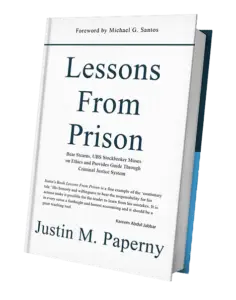For individuals in federal prison, time is either an asset—or a liability. The Bureau of Prisons has made its position clear: individuals who use their time to build documented, measurable release plans are far more likely to receive favorable consideration for early placement, including home confinement. The June 2025 BOP memo emphasized this shift, identifying the “release plan” as a central factor in referral decisions. This plan is not a fill-in-the-blank worksheet. It’s a written, detailed record that shows how you’ve used your time—what you’ve learned, what you’ve built, and how you’re preparing for release with specific, measurable steps.
Michael Santos pioneered this approach long before it became formal policy. While serving 26 years in federal prison, Santos created an evolving release plan that demonstrated progress in education, personal development, and post-release goals. His work helped influence institutional culture—and now, BOP policy. His Release Plan Workbook has been distributed to thousands of federal prisoners. The workbook walks individuals through a framework to define values, set goals, and document daily progress. Santos didn’t wait for the government to give him credit. He built assets that made it impossible to ignore his preparation.
That same standard now applies to every person in custody. If you’ve pled guilty and broken the law, the first step is to stop rationalizing. You’re not a victim. You don’t have to agree with your sentence to start doing the work. Blame doesn’t change your situation—documentation does. The only thing that matters now is how you use your time.
In my case, I wasted the first three months of my sentence. I was focused on resentment, not documentation. That changed when I shared a cubicle with Michael. He taught me to stop thinking about what I lost and start creating something that mattered. His advice was simple: build assets. Help someone. Create value. And document every step of it.
The release plan is the foundation. It can include educational goals, letters of support, volunteer work, employment targets, and a roadmap for reintegration. But above all, it must reflect consistency and growth over time—not last-minute effort.
The BOP memo specifies: “Documentation should support the individual’s release plan.” This is what separates those who receive favorable referrals from those who do not. A checklist is not enough. A release plan is only valuable when it includes written, dated proof of progress. The more complete and transparent the plan, the more it demonstrates accountability to probation officers, case managers, and BOP administrators.
Publishing that plan on PrisonProfessorsTalent.com creates leverage. The platform allows individuals to share their goals, accomplishments, and growth in one accessible place. It’s not just about visibility—it’s about showing stakeholders that you’re serious. Michael Santos models this himself; his public profile documents the work he did while incarcerated and the plans he’s executed since. That’s the bar.
The release plan is not an optional document. It is now a central tool for influencing administrative review, home confinement referrals, and prerelease preparation. The earlier it is started, the more credible it becomes. If you’re in federal prison and you haven’t created one, start today. If you’ve already begun, update it. Publish it. Build an asset the system can evaluate.
If you want help building or refining your release plan, join our weekly webinar every Tuesday at 11am PST / 2pm EST—or schedule a personal call.
Justin Paperny



